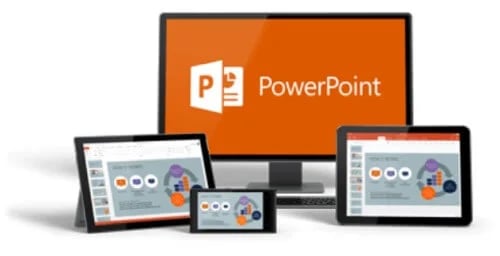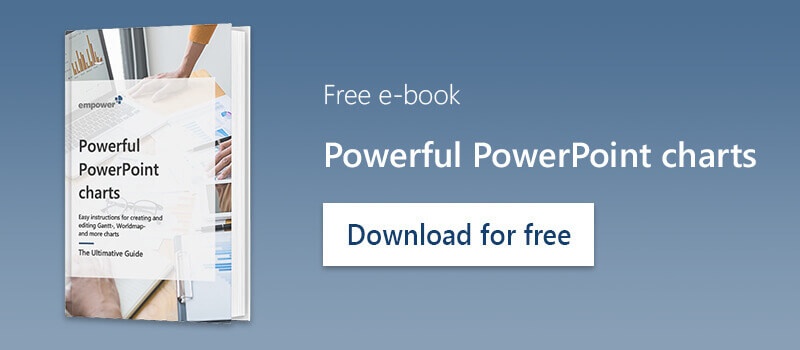Our clients frequently ask us what is the best aspect ratio to use in PowerPoint. 4:3? 16:9? DIN A4 or Letter? Our recommendation: your best bet is 16:9. This choice is simple. These days PowerPoint presentations are increasingly presented in digital form and are seldom printed. No matter if viewed on laptop, monitor or with a modern projector. They all use the 16:9 aspect ratio that has long become standard. This format looks more modern and more appealing as the area is used far more economically without the need of large black bars to the left and right! Our recommendation is true for most scenarios. There may be some exceptions, for example, if most presentations you create are to be printed. In this case DIN A4 ot Letter is definitely the right choice. If you work extensively with iPads and presentations in the field then 4:3 is the format for you. In most cases, however, 16:9 remains the aspect ratio of choice for PowerPoint presentations.

Why not change and abandon 4:3?
There are several reasons. For one, many users are still used to 4:3. Completely changing to 16:9 can be a considerable design obstacle – proportions are quite different. You can, however help your colleagues tackle this challenge: reapairing conclusive style guides in the form of slide templates. Apart from many inspirational design ideas the user will quickly gain a better understanding of the new format. In addition, the new 16:9 masters or their layouts can be intelligently designed in a way that layouts can guide the user with a clever placement of placeholders and infotexts.
Another reason to keep to 4:3 are projectors that still do not support 16:9. This issue can, of course, not be ignored. Keep in mind, though, that newer projectors have supported this format for years. Equipment 10 years old or older usually offer the possibility to change settings in order to display 16:9. Projectors that exclusively support 4:3 are rare and are becoming increasingly “extinct”. Check in your own organization as to what kind of technical limitations really exist. Talk to clients to whom you often present, or seek out the organizers of the conferences you attend. A reality check is never a bad idea and may be surprised.
If you find out that you need or want to offer both formats, then why not? Since PowerPoint 2013 it has been possible to change the format of a “draft” quite easily. Once could simply switch between both formats. There are some aspects to be kept in mind: logos and round shapes are distorted when using this native PowerPoint function. For this reason, it is advisable to copy these elements to a separate file and then add them back to the presentation once the format has been changed.
16:9 is going to be introduced. What about all the old slides?
Regardless if you completely abolish 4:3 or use the format in addition to 16:9; the question is what are you going to do with all the slides that exist in 4:3? This is not your only problem. A change in format often also means a change in design. What may sound worrying can be solved with a clearly structured plan. View a number of these older presentations and check what happens when you apply a new master (design) as well as after you change the format. Depending on the results we recommend a neat and structured guideline. Pay particular attention that layouts that are no longer required after switching to a new design are deleted, footers are uniform, and that reformatted placeholders are reset to the requirements of the new master. In a last step, all colors, fonts, font sizes, bullets and other deviations need to be corrected.
Find out about the modern PowerPoint format 16:10 and when to use it in comparison to the format 16:9.
Go for it!
Our conclusion: Take the leap and do not hesitate to move to 16:9! If you tackle this project in a structured manner this change will hardly be an issue. As a result, you will profit from the advantages of using 16:9. The 16:9 format looks more sophisticated, offers more design possibilities and makes the most of the new screen formats.
Easy adaption to a new PowerPoint format with empower®
You May Also Like
Related articles

10 free stock photo sources for PowerPoint presentations

Creating a world map in PowerPoint


